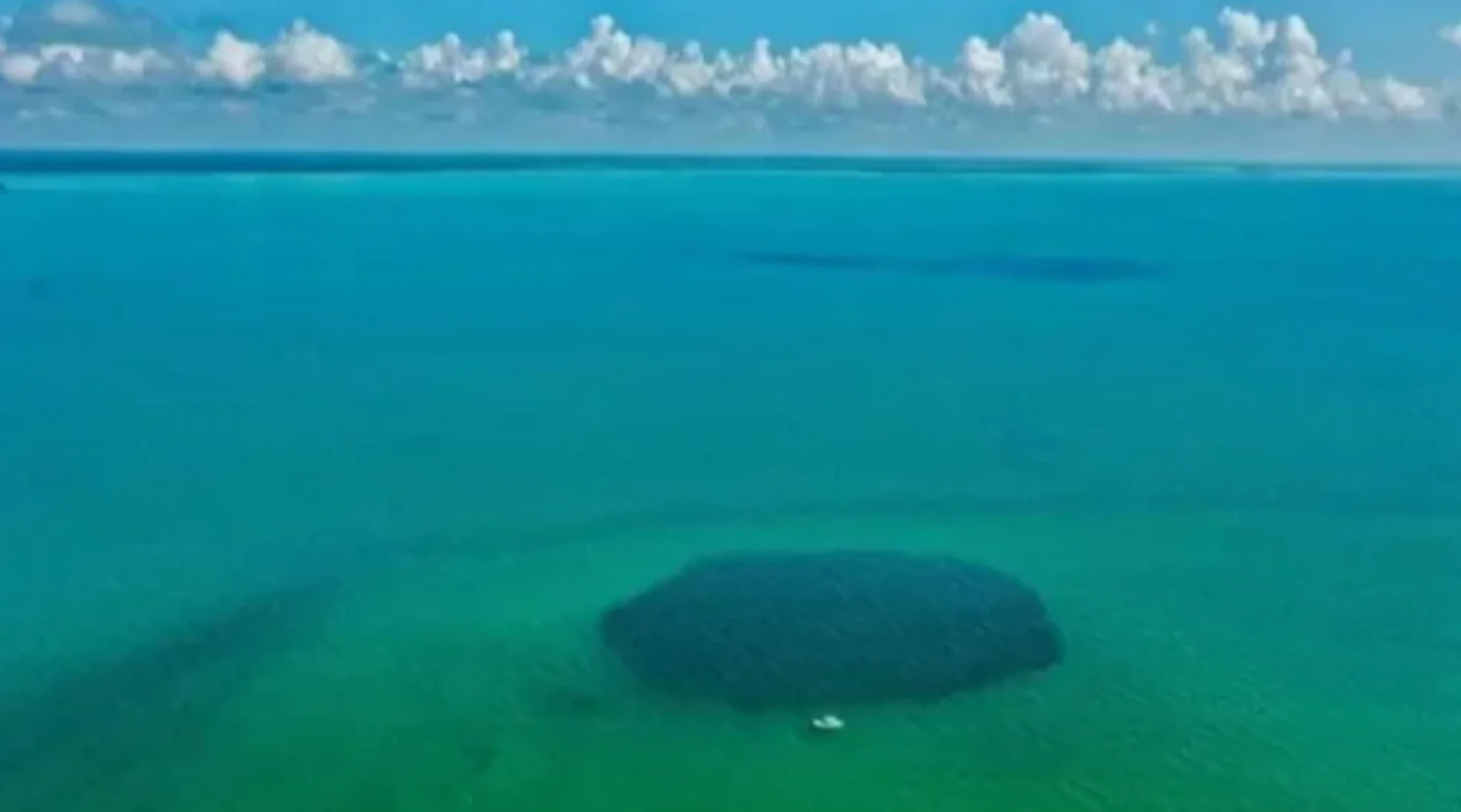
There's a hole in the ocean, and scientists have yet to find its bottom
A bottomless pit? For now, it appears that way.
A team of oceanographers from several Mexican institutions say the Taam Ja' Blue Hole (TJBH) is the deepest in the world.
It's located in Chetumal Bay on the southern coast of the Yucatán Peninsula, and so far, researchers haven't found the bottom.
However, They do know that it is more than 100 metres deeper than the previous record holder, the Dragon Hole of the South China Sea, which ends at 301 metres below sea level.
The seemingly bottomless pit off the shores of Mexico is so deep that sound can't even bounce off its bottom. Experts say this is unusual because sound travels typically well in water.
It was discovered in 2021 and was initially believed to be about 275 meters deep. In December 2023, scientists dropped an anchored research vessel into the TJBH.
All 500 metres of cable rolled out, and the device still hadn't found the bottom. TJBHIt descends at a slight angle, meaning the vessel stopped at about 420 metres.
Changes in the water conditions were detected at the 400-metre mark, suggesting the hole could have a tunnel connecting to the Caribbean Sea.
The blue hole lies in an area full of water-filled sinkholes, hidden caves, and underwater rivers.
Researchers hope to go back and measure it again, but for the time being, its bottom is "yet to be reached," they write in a recently-published paper.
In an upcoming study, scientists write they hope to map the hole's "maximum depth," and look into the possibility of the hole "forming part of an underwater intricate and potentially interconnected system of caves and tunnels," which could be a treasure trove of information.
"Within the depths of TJBH could also lie a biodiversity to be explored," they write.
